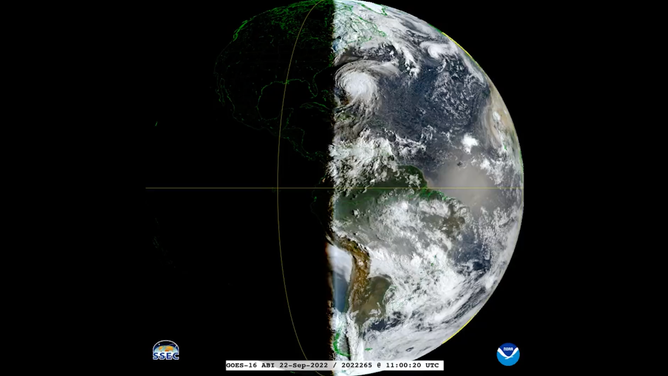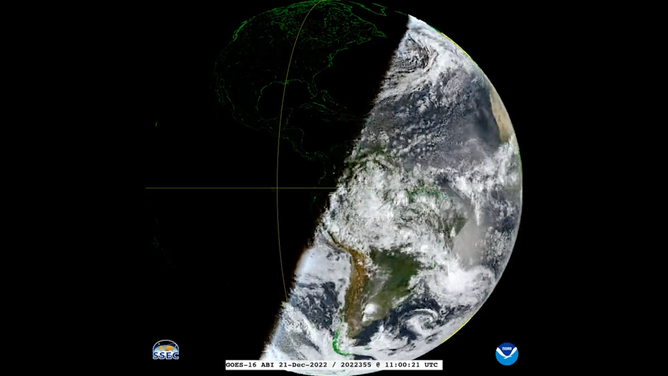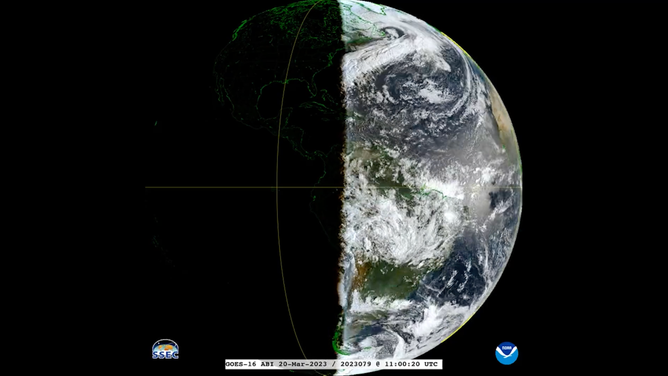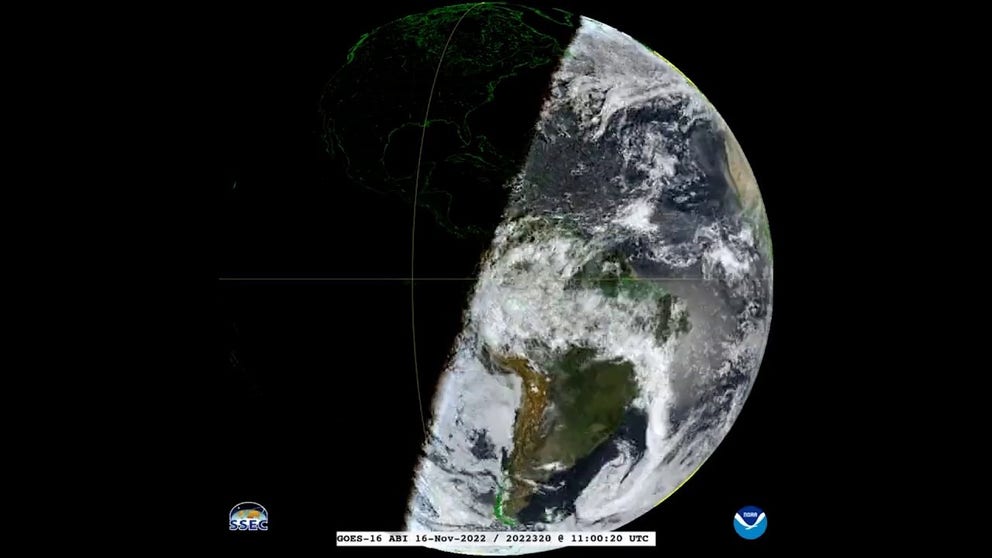Time-lapse shows sun angle change for the start of spring
The video stitches together satellite imagery recorded every day at 11 a.m. UTC from the autumnal equinox on Sept. 22, 2022 to the spring equinox on March 20, 2023.
Timelapse of satellite imagery shows sunlight angle change over 6 months
A distinct line separating daylight and the dark of night tilts back and forth. This demonstrates how, as our planet orbits the sun, the angle at which the sun shines on it changes. (Courtesy: NOAA)
NOAA released a time-lapse Monday showing the changing angle of sunlight on the Earth over the past six months.
The video stitches together satellite imagery recorded every day at 11 a.m. UTC from the start of astronomical fall on Sept. 22, 2022, to the start of astronomical spring on March 20, 2023.
Throughout those six months, footage shows a distinct line separating daylight and the dark of night, tilting back and forth.
This movement demonstrates how the tilt of our planet’s axis and the point of its revolution around the sun correlate with a changing sunlight angle throughout the seasons.
The video begins with the sunlight angle in a straight line between the North and South Poles.
This is during the autumnal equinox on Sept. 22, when the number of daylight hours equals the number of nighttime hours.

The sunlight angle on September 22, 2022, as captured by NOAA and the GOES16 satellite.
(@NOAASatellitePA / Twitter / FOX Weather)
The angle begins to tilt forward until the winter solstice on Dec. 21.
At this point, the Northern Hemisphere experiences the smallest number of daylight hours in the year, whereas the Southern Hemisphere experiences the greatest number of daylight hours.

The sunlight angle on December 21, 2022, as captured by NOAA and the GOES16 satellite.
(@NOAASatellitePA / Twitter / FOX Weather)
As winter progresses, the sunlight angle tilts back to create a straight light between the poles again during the spring equinox on March 20.
Like the autumnal equinox, the spring or vernal equinox experiences an equal number of daylight and nighttime hours.

The sunlight angle on March 20, 2023, as captured by NOAA and the GOES16 satellite.
(@NOAASatellitePA / Twitter / FOX Weather)
